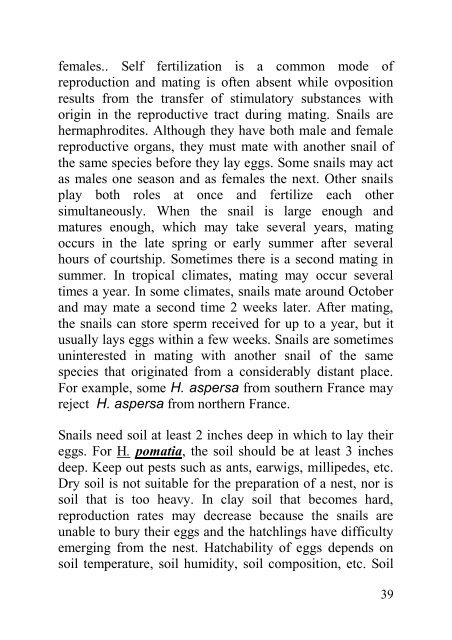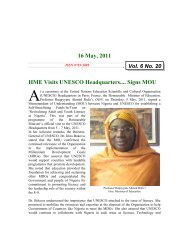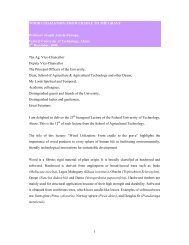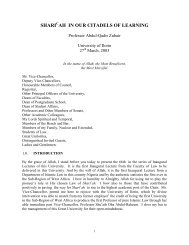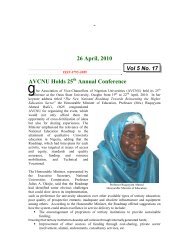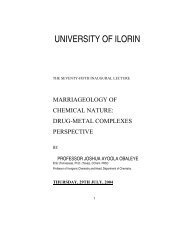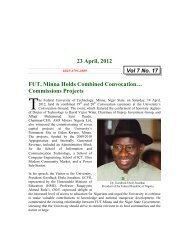THE VARIED ROLES OF SNAILS - National Universities Commission
THE VARIED ROLES OF SNAILS - National Universities Commission
THE VARIED ROLES OF SNAILS - National Universities Commission
Create successful ePaper yourself
Turn your PDF publications into a flip-book with our unique Google optimized e-Paper software.
females.. Self fertilization is a common mode of<br />
reproduction and mating is often absent while ovposition<br />
results from the transfer of stimulatory substances with<br />
origin in the reproductive tract during mating. Snails are<br />
hermaphrodites. Although they have both male and female<br />
reproductive organs, they must mate with another snail of<br />
the same species before they lay eggs. Some snails may act<br />
as males one season and as females the next. Other snails<br />
play both roles at once and fertilize each other<br />
simultaneously. When the snail is large enough and<br />
matures enough, which may take several years, mating<br />
occurs in the late spring or early summer after several<br />
hours of courtship. Sometimes there is a second mating in<br />
summer. In tropical climates, mating may occur several<br />
times a year. In some climates, snails mate around October<br />
and may mate a second time 2 weeks later. After mating,<br />
the snails can store sperm received for up to a year, but it<br />
usually lays eggs within a few weeks. Snails are sometimes<br />
uninterested in mating with another snail of the same<br />
species that originated from a considerably distant place.<br />
For example, some H. aspersa from southern France may<br />
reject H. aspersa from northern France.<br />
Snails need soil at least 2 inches deep in which to lay their<br />
eggs. For H. pomatia, the soil should be at least 3 inches<br />
deep. Keep out pests such as ants, earwigs, millipedes, etc.<br />
Dry soil is not suitable for the preparation of a nest, nor is<br />
soil that is too heavy. In clay soil that becomes hard,<br />
reproduction rates may decrease because the snails are<br />
unable to bury their eggs and the hatchlings have difficulty<br />
emerging from the nest. Hatchability of eggs depends on<br />
soil temperature, soil humidity, soil composition, etc. Soil<br />
39


